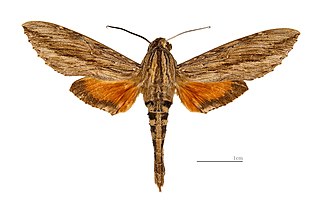
Flower chafers are a group of scarab beetles, comprising the subfamily Cetoniinae. Many species are diurnal and visit flowers for pollen and nectar, or to browse on the petals. Some species also feed on fruit. The group is also called fruit and flower chafers, flower beetles and flower scarabs. There are around 4,000 species, many of them still undescribed.

Eurata is a genus of moths in the subfamily Arctiinae. The genus was erected by Gottlieb August Wilhelm Herrich-Schäffer in 1853.

Hypocrisias is a genus of moths in the family Erebidae erected by George Hampson in 1901.
Paracles is a genus of moths in the subfamily Arctiinae. The genus was described by Francis Walker in 1855. The species range from Panama to Patagonia, with quite a few in the southern temperate region of South America.
Parasiccia is a genus of moths in the subfamily Arctiinae.

Tessellota is a genus of moths in the family Erebidae.
The Obtectomera is a clade of macro-moths and butterflies, comprising over 100,000 species in at least 12 superfamilies.

Dilophonotini is a tribe of moths of the family Sphingidae described by Hermann Burmeister in 1878.

Dysschema centenaria is a moth of the family Erebidae. It was described by Hermann Burmeister in 1878. It is found in Argentina.
Episcepsis obsoleta is a moth of the family Erebidae. It was described by Hermann Burmeister in 1878. It is found in Argentina.

Paracles costata is a moth of the subfamily Arctiinae first described by Hermann Burmeister in 1878. It is found in Brazil.

Paracles persimilis is a moth of the subfamily Arctiinae first described by Hermann Burmeister in 1878. It is found in Brazil.
Eurata igniventris is a moth of the subfamily Arctiinae. It was described by Hermann Burmeister in 1878. It is found in Argentina.
Eurata patagiata is a moth of the subfamily Arctiinae. It was described by Hermann Burmeister in 1878. It is found in Argentina.

Hypocrisias minima, the least hypocrisias, is a moth of the subfamily Arctiinae. The species was first described by Neumoegen in 1883. It is found in Mexico, southern Arizona, New Mexico, and Texas.

Opharus picturata is a moth of the family Erebidae. It was described by Hermann Burmeister in 1878. It is found in Uruguay, Argentina and Brazil.
Euclera rubricincta is a moth of the subfamily Arctiinae first described by Hermann Burmeister in 1878. It is found in the Amazon region and Argentina.
Progona luridipennis is a moth in the subfamily Arctiinae. It was described by Hermann Burmeister in 1878. It is found in Argentina.

Tessellota cancellata is a moth in the family Erebidae. It was described by Hermann Burmeister in 1878. It is found in Argentina and Paraguay.

Tessellota trifasciata is a moth in the family Erebidae. It was described by Hermann Burmeister in 1878. It is found in Argentina and Bolivia.











